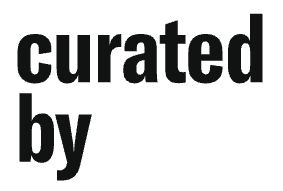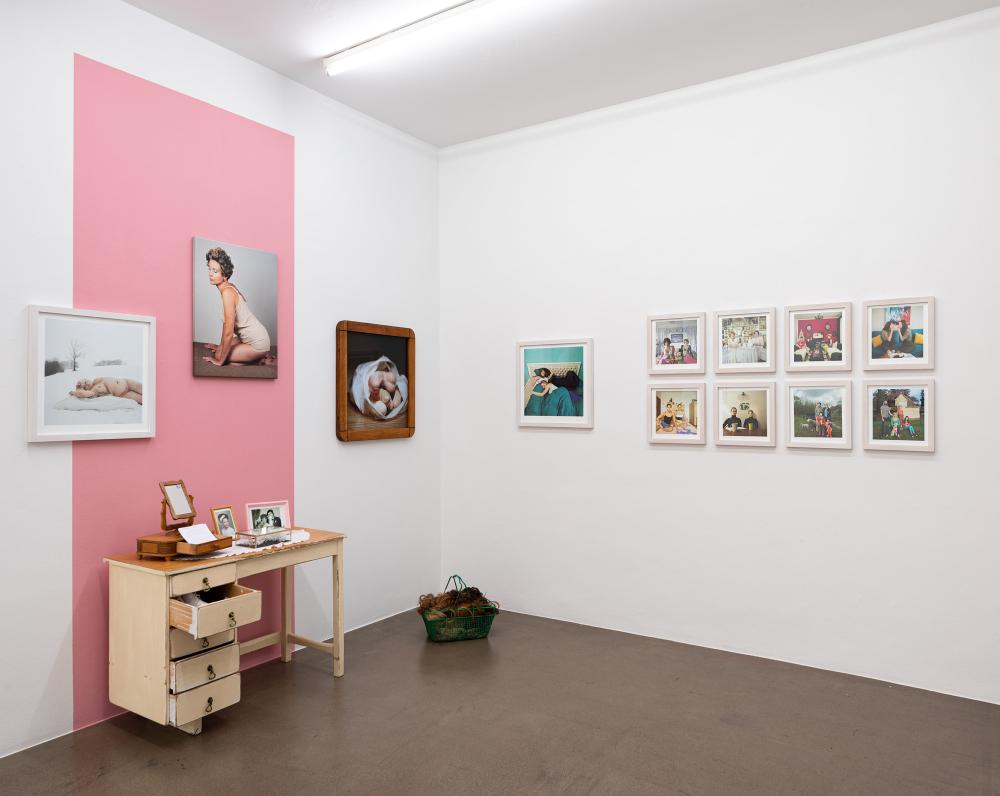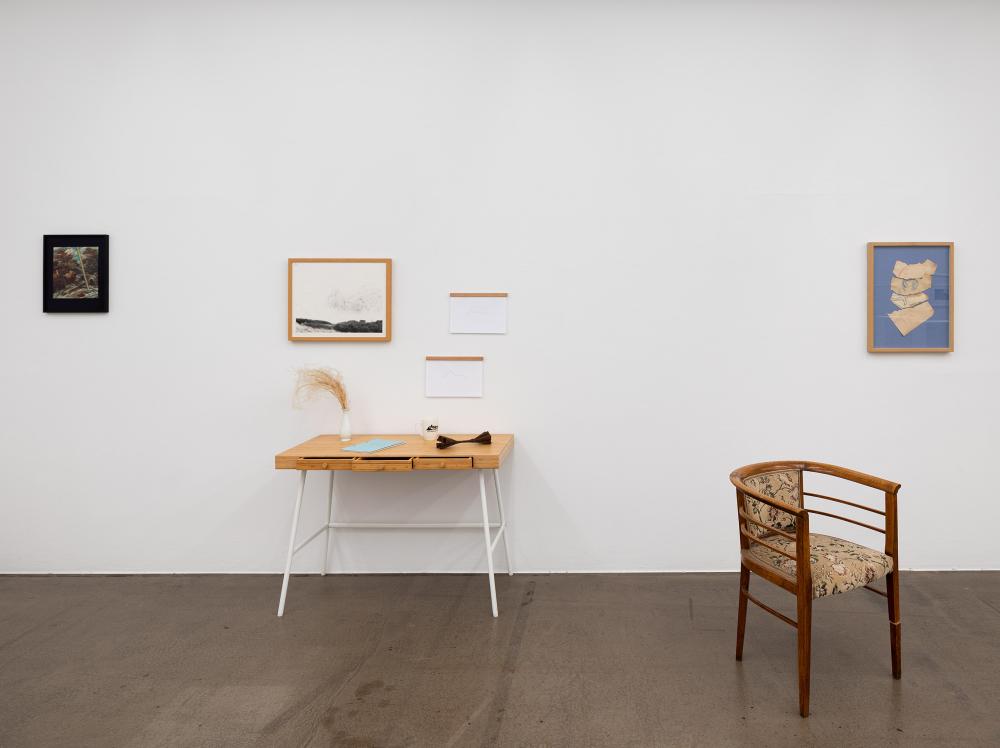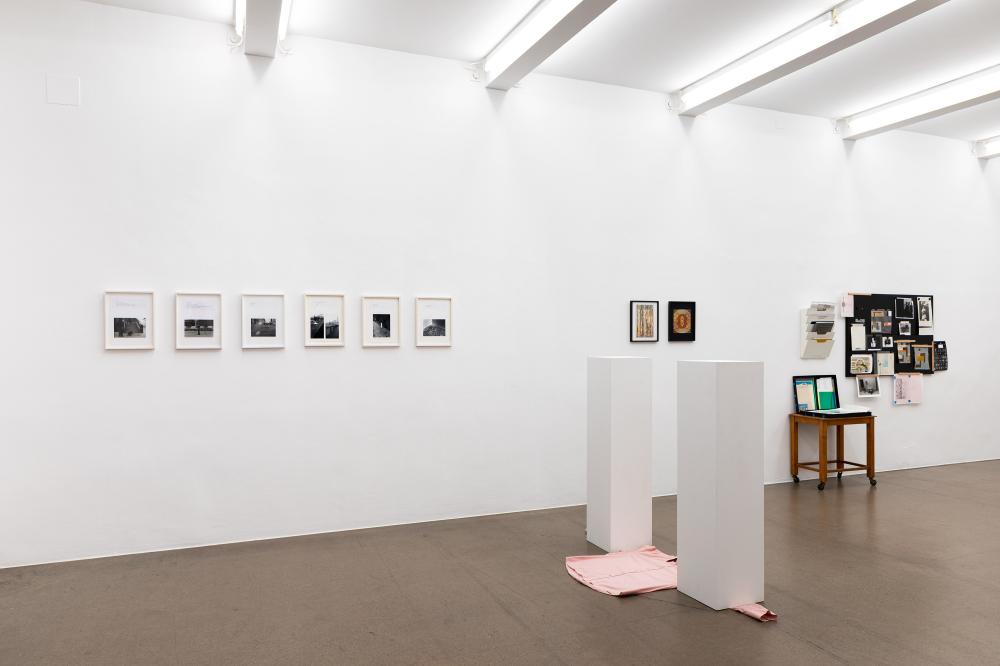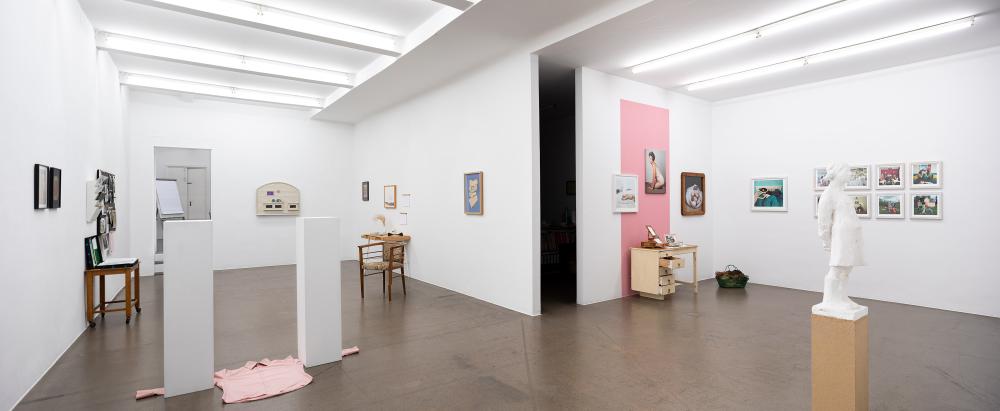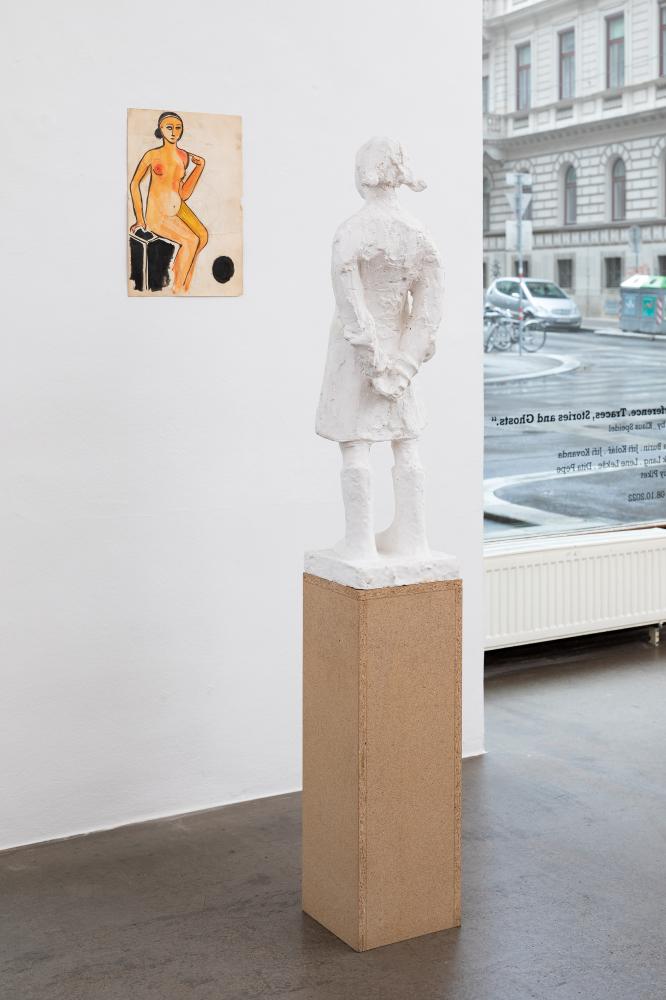Krobath Wien curated by Klaus Speidel
„Interference. Traces, Stories and Ghosts.“

www.galeriekrobath.at
Curator(s):

Klaus Speidel (*1979) is an art critic, curator and Doctor of philosophy (Sorbonne). He curated exhibitions around themes like writing in art, drawing and digital, the role of storytelling, vulnerability, or our relationship to nature. He writes for Artpress, Brooklyn Rail, Parnass and Spike and contributed to catalogues of the Centre Pompidou, Schirn Kunsthalle, Kunsthalle Wien, mumok or the Belvedere. He teaches at the University of applied arts in Vienna and the Paris College of Art.
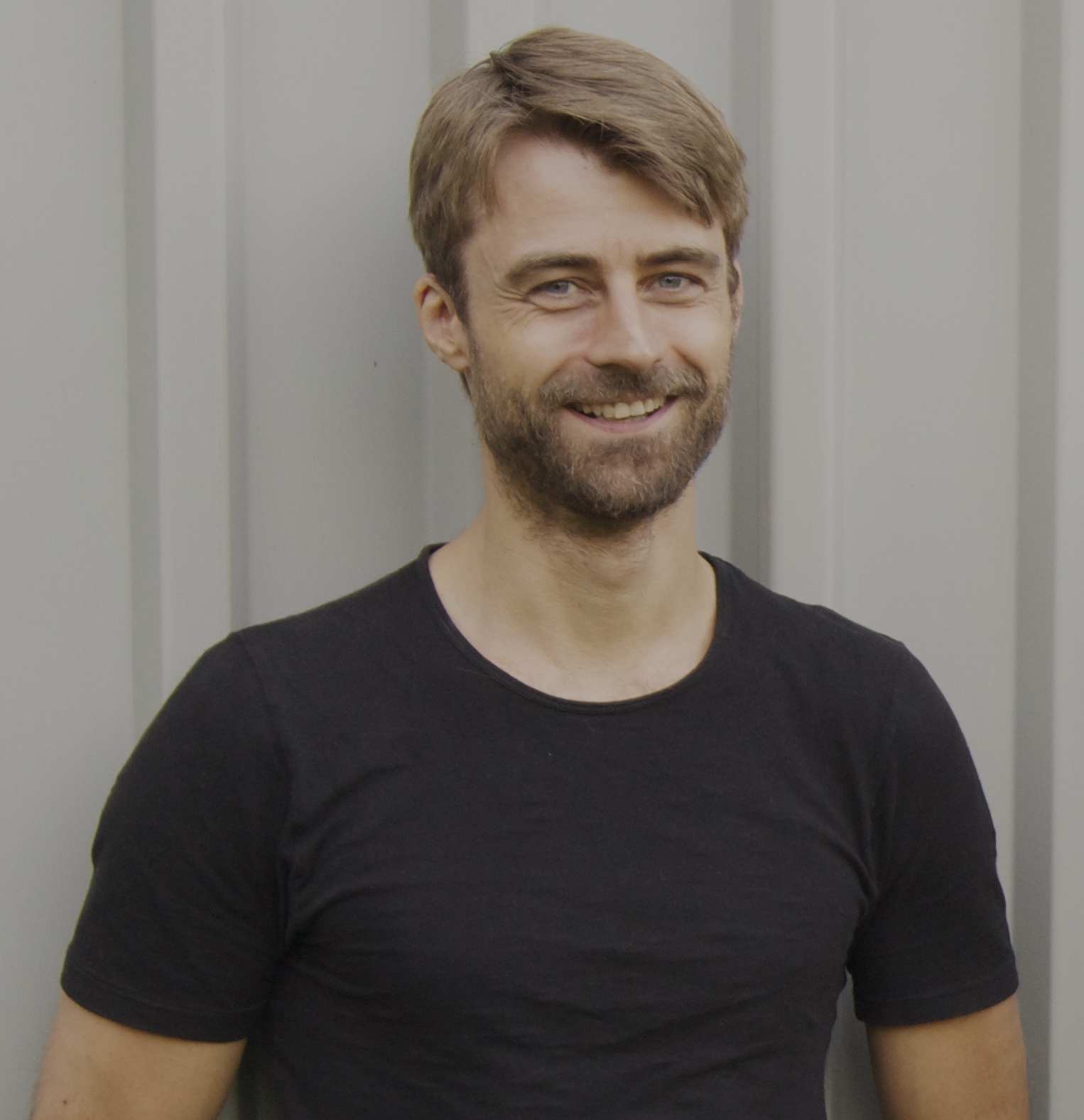
Artist(s):
-
Katarina Burin Moregeboren in Bratislava, Slowakei. lebt und arbeitet in Cambridge, Massachusetts.
-
Lene Lekše More1995 geboren in Ljubljana, Slovenien.
- Malenkiy Piket
-
Dita Pepe More1973 geboren in Ostrava, Tschechien. lebt und arbeitet in Ostrava, Tschechien.
-
Jiří Kovanda MoreBorn 1953 in Prague, Czech Republic. Lives and works in Prague. Seit 1995 Professor an der Akademie für Bildende Kunst in Prag
-
Jiří Kolář MoreGeboren 1914 in Protivín. Gestorben 2002 in Prag.
-
Dominik Lang MoreBorn 1980 in Prague. Lives and works in Prague. Studierte im Spatial Art studio von Jiři Přihoda an der Akademie der bildenden Künste in Prag.
Exhibition text
More
"Whether any act of interference is good or bad is a value judgment that could be based logically on the type of interference and the ends for which the interference is conducted." – Richard W. Cottam, American political scientist and contributor to the C.I.A., 1967. "Disordering the meaning – disordering the concepts and all the little tropical rains of demoralisation, disorganisation, destruction, collision..." – Tristan Tzara, Romanian artist, 1920. In a world where 70 countries are using cyber troops to spread propaganda and industrialise disinformation, the exhibition Interference. Traces, Stories and Ghosts, explores interference as an artistic strategy. It is probably no coincidence that it was roughly at the same time in the Cold War era of the 1960s and 1970s that interference first came to full fruition both as a method of psychological warfare and artistic troublemaking. Yet, artistic and state interference differ fundamentally in their methods and goals. The often playful acts of artistic interference are not destructive but productive. Their impetus is imagination, not imperious command. Their goal is social progress, rather than the preservation or expansion of power. As interventions in the ordinary course of things, they bring our automatisms to a halt and can provoke critical thinking or dissent. Instead of virality and click rates, they pursue singularity and deceleration. Artistic interference in public space, like those Jiří Kovanda developed in Czechoslovakia in the 1970s, plays an essential role in the history of artistic inference. Many of Kovanda’s performances are conspicuously unconspicuous. Leaning against a barrier, he makes seemingly natural gestures while really following a script, or gather dirt with his hands and scatters it again. In the gallery, he transforms ordinary objects through minimal interventions, cutting the leg of a chair or seemingly misusing two pedestals by placing them on a shirt. In public space, he doesn’t create large marble sculptures for eternity, but builds small assemblages out of sugar cubes that perish with the next rain, or inserts wedges – perhaps the most minimal allegory for holding things open – between floor bricks. Since February 2022, Malenkiy Piket (Russian: Little Demonstrator) has been using a comparable strategy in a similarly repressive climate 50 years later, namely contemporary Russia. When Vladimir Putin banned any demonstration or statement against his Ukrainian war, a young Russian artist launched this project in Saint Petersburg. The participatory initiative has since spread far beyond the country’s borders. The idea is simple: if we are no longer allowed to demonstrate with our own bodies in public space, proxies do it for us, namely small figures made of plasticine or other materials that are discreetly placed there. In this way, not only does dissent remain visible in public, but – at least this is the intention of the initiator – people do not completely lose the ability to protest. In replacement of Kovanda’s black and white photographs, Malenkiy Piket uses Instagram (@malenkiy_piket) as a place of display and community. By September 2022, over 850 images had already been posted. On a paperboard in the exhibition, the conceptual basis of the action can now be seen for the first time. Plasticine and other materials invite visitors in the Positive Interference Lab to design their own protest figures on topics that are important to them to then be placed in the lab or in public space (social media posts may be tagged with #positiveinterferencelab and sent to @malenkiy_piket). In 1953, Jiří Kolář already succumbed to the danger faced by activists in today’s Russia: The author and visual artist was imprisoned for 9 months for his literary texts. A pardon spared him another year in jail. Draping ordinary objects in text excerpts, pictures or diagrams, Kolář crosses boundaries between art and everyday life, poetry and visual art. Instead of simply celebrating the great works of art history by respectfully quoting them, he cuts up art prints and reassembles them, or comments on current events such as the Soviet Union’s invasion of his homeland using images like the Expulsion from Paradise. Like here, artistic disruption often goes hand in hand with the questioning of dominant value systems. In Dominik Lang’s case, this destructive-creative appropriation has a particularly personal dimension. He works on the work of his father Jiří Lang (1927 - 1996), whose sculptures and drawings who conflicted to much with the official art doctrine in the Czechoslovak Republic to gain visibility. So Jiří Lang’s time was over before it had even come. Dominik Lang’s approach to his father’s estate keeps it alive rather than preserving it merely as a document of times past. In 2011, father and son made a joint appearance in Dominik Lang’s solo exhibition “The Sleeping City” at the Venice Biennale. When the son incorporates his father’s works into his own, recombines them or comments on them, he deals both with personal biography and art history and disrupts the usual relationship between father and son. Katarina Burin’s exploration of the modernist architect Petra Andrejova-Molnár, who was born in Bratislava in 1899 and died in the US in 1985, is also centred on an estate. The exhibition will show the curator’s repeated attempts to understand and present the valuable archive that Burin created and sent over from Cambridge, Mass. A seemingly endless and disorganised number of colour tests, prints, architectural designs and photographs, convey a sense of the complex life and work of an important, but suppressed, female position in modernist architecture that one can only wish had really existed. Similar to Burin, but different in form and content, Dita Pepe’s Betynka (2022) develops a trace-based narrative that oscillates between the documentary and the fictional. The combination of text, an interview with the protagonist, photographs and objects slowly reveals a biography where the artist empathises so radically with her subject that her own life story eventually intertwines with Betynka’s and we no longer know where Betynka ends and Dita begins. Mixed biographies are also the subject of self-portraits with women and self-portraits with men, in which Pepe interferes with the others’ families as well as her own. Like Pepe and Burin, Lene Lekše stages a trace-based narrative. From the clues, the story of a vanished mountain emerges, whose loss is mourned by an exchange in a secret language consisting of whistles and a strange folk song. Various memorabilia suggest a mountain cult reminiscent of tourists chasing souvenirs. In a series of drawings, the artist tries to give form to the mountain, failing over and over again: “We will not be prevented from creating what prevents us from creating“, a sentence by Karl Kraus, could become the motto of this work as well as the whole exhibition. The Positive Interference Lab (PIL) invites you to continue the interference processes initiated in the show. With pens, modelling clay, a paperboard and a computer with printer, it is a place where artistic impulses can become art-based thought and action. In the heart of Vienna, people can thus tinker with interference strategies – under the guidance of artists, activists, scientists or on their own initiative – so that aesthetic perception becomes art- based action. Workshops such as “Interfering with the Self“ or “Interfering with Artificial Intelligence” have already been scheduled. Like the exhibition, the Lab will experiment with counter-narratives, historical storytelling, national geographies, art history, our (auto)biographies and cheerfully conjure up ghosts.

